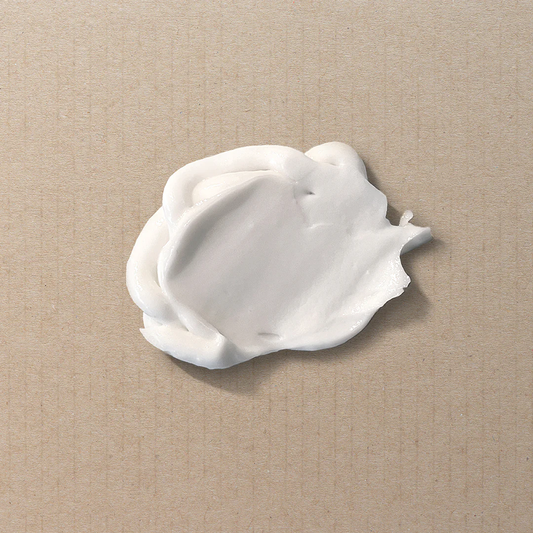Have you ever looked in the mirror and wondered why your face looks like a tomato?
Don't worry, you're not alone.
Red skin on the face can be caused by a number of different factors, some of which are perfectly normal and others that may require some attention.
In this article, we'll discuss whether you should be worried if your face is red, top 10 reasons your face may be red and give you some tips on how to get your skin back to its normal color.

Should I be worried if my face is red?
While redness on the face is usually nothing to worry about, there are certain cases where it may be a sign of a more serious condition.
If your face is persistently red, or if you're experiencing other symptoms such as itching, burning, or pain, it's always a good idea to speak with a healthcare professional. They can help determine whether there's an underlying issue causing the redness, such as a skin infection or an allergic reaction.
Additionally, if you've recently started a new medication and are experiencing redness on your face, it's important to speak with your doctor, as this could be a side effect of the medication.
Lastly, if you're experiencing sudden and severe facial redness, along with other symptoms such as difficulty breathing, swelling of the lips or tongue, or a rapid heartbeat, seek immediate medical attention as this could be a sign of a serious allergic reaction or other medical emergency.
As always, it's better to err on the side of caution and speak with a healthcare professional if you're concerned about the redness on your face.
What causes my face to be so red?
-
Sunburn: Sunburn can cause facial redness, pain, and skin damage. Wear broad-spectrum sunscreen with an SPF of 30 or higher and reapply every 2 hours (even if it's cloudy outside).
Wear a wide-brimmed hat and seek shade during peak sun hours.
Protecting your skin from the sun is crucial for maintaining a healthy complexion.
-
Rosacea: Rosacea is a common skin condition that causes redness and visible blood vessels on the face. While it's more common in women, men can also be affected.
It's thought to be related to a combination of genetic and environmental factors, and triggers may include stress, alcohol, spicy foods, hot drinks, and extreme temperatures.
There's no cure, but medical treatments and lifestyle changes can help manage symptoms, including avoiding triggers and using gentle skincare products featuring aloe vera, white tea, kakadu plum which have anti-inflammatory and antibacterial properties.
-
Allergies: Allergic reactions can cause facial redness, swelling, and itching. Common allergens include pollen, pet dander, certain foods, and medications.
To manage allergic reactions, you may need medications and should avoid triggers. Cold compresses and gentle, fragrance-free skincare products can also help soothe irritated skin.
Identifying and avoiding allergens can help reduce facial redness and maintain a healthy complexion.
-
Acne: Acne can cause facial redness, which can be managed by practicing good skincare habits, such as using a natural exfoliating face mask that gets rid of dead skin cells, and making lifestyle changes such as eating a healthy diet, getting enough sleep, and managing stress.
See a dermatologist for persistent or severe acne-related redness, who may recommend topical or oral medications, light therapy, or other treatments.
-
Eczema: Eczema is a chronic skin condition that can cause redness, itching, and flaking on the face and other parts of the body.
Its cause is unknown but is believed to be related to genetic and environmental factors.
Managing eczema-related facial redness can be challenging, but treatments such as topical steroids, moisturizers, and avoiding triggers can help.
-
Shaving: Shaving too aggressively or with a dull razor can cause facial redness and inflammation. To prevent this, use a sharp, hot razor, shave in the direction of hair growth, and use a shaving cream or gel. Also make sure you use a pre-shave oil before shaving can also help to lubricate the skin and reduce the risk of irritation and facial redness.
-
Exercise: Exercise increases body temperature and blood flow, causing facial redness.
To soothe exercise-induced facial redness, apply a cold compress to your face or take a cool shower after exercising to reduce inflammation and calm irritated skin.
-
Alcohol: Alcohol causes facial redness by dilating blood vessels. It can also dehydrate the skin, leading to a dull appearance.
To combat the effects of alcohol on your skin, it's important to drink plenty of water and moisturize your skin regularly. You can also try using cool compresses or taking cool showers to reduce facial redness after drinking.
-
Hot or Spicy Foods: Spicy foods can cause facial redness as capsaicin, the compound responsible for the heat in spicy foods, can dilate the blood vessels in the face.
While this is a normal response, it can be more pronounced in some people. To minimize the redness, try cooling your face with a cold cloth and drink water while eating spicy foods.
-
Stress: Stress can cause facial redness due to hormones that dilate blood vessels.
Manage stress through relaxation techniques, exercise, and enjoyable activities.
Persistent or worsening redness should be checked by a dermatologist.
Psssst... interrupting our own blog here to bring you a little secret that's too good to keep under wraps.
For a limited time, we're offering a FREE Daily Essentials Kit, packed with everything you need to get clearer, younger, healthier looking skin.
No catch, no sample sizes — get full-size products straight to your door. Just cover shipping.
Join our VITAMAN Tribe to claim your kit:
How do men fix redness on face?
If you’re a man and you’re dealing with redness on your face, there are a few things you can do to help alleviate the problem. Here are some tips:
-
Use a gentle cleanser: Many traditional soaps and cleansers contain harsh surfactants that can strip the skin of its natural oils, leading to dryness, flaking, and even breakouts.
Instead, opt for a gentle, pH-balanced cleanser that is designed to cleanse your skin without stripping it of its natural oils. Look for natural ingredients like aloe vera, sweet orange peel oil, and which hazel, which have soothing and anti-inflammatory properties.
These ingredients can help to calm and soothe irritated skin, while also providing gentle hydration.
-
Moisturize: Moisturizing your skin can help keep it hydrated and reduce redness.
Look for a face moisturizer compatible with sensitive skin.
-
Use skincare products with aloe vera: Aloe vera has natural anti-inflammatory properties that can soothe and calm the skin, reducing redness and irritation.
Additionally, aloe vera can help to hydrate the skin and improve its overall texture and appearance.
-
Wear sunscreen every day: Sun exposure can cause your face to become red and inflamed. Protect your skin by wearing a broad-spectrum sunscreen with an SPF of at least 30.
-
Drink green tea: Green tea contains antioxidants that can help reduce inflammation and redness. Try drinking a cup of green tea each day, or look for skincare products that contain green tea extract.
-
Use a cold compress: If your face is particularly red and inflamed, try applying a cold compress to help reduce swelling.
-
Be gentle with your skin: To prevent redness and irritation on your face, it's best to avoid harsh scrubbing or rubbing.
Instead, be gentle when washing your face and pat it dry with a soft towel. Avoid pulling or rubbing your skin since it can cause inflammation. -
Consult a dermatologist: If your redness is persistent and doesn’t seem to be going away, it may be time to consult a dermatologist.
They can help determine the underlying cause of your redness and recommend a treatment plan that’s tailored to your skin type and concerns.
Conclusion
In conclusion, redness on the face can be a common and harmless occurrence, but it's always important to be aware of the underlying causes and seek professional help if necessary.
From sunburn and allergies to acne and stress, there are a number of reasons why your face may turn red, and fortunately, there are many ways to alleviate the problem.
By taking care of your skin with pH-balanced cleansers, gentle moisturizers, and protective measures like sunscreen, you can help keep redness at bay.
And if you do experience persistent redness or other symptoms, don't hesitate to speak with a healthcare professional or dermatologist who can help you get to the root of the issue and find a solution that works for you.



















